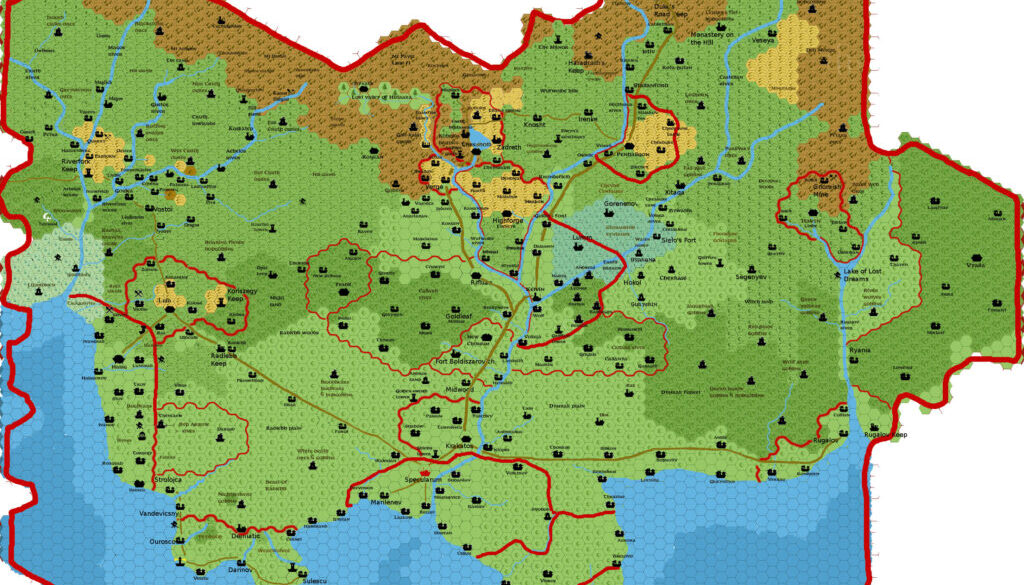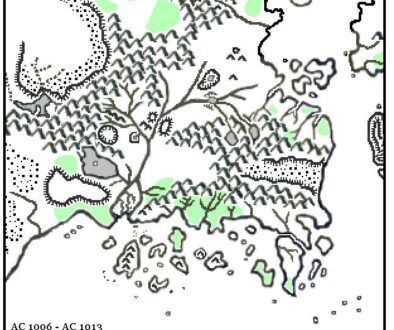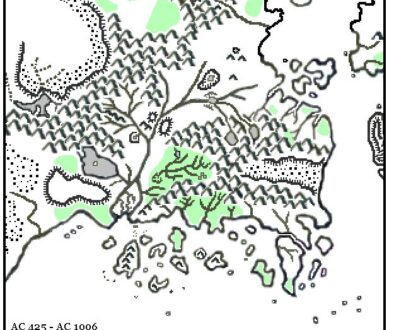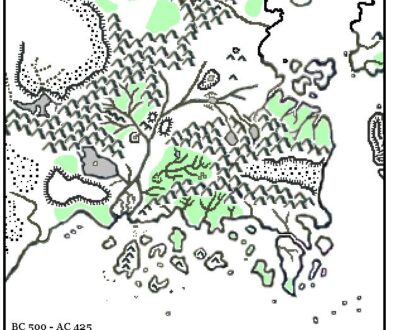Sturm’s Karameikos, 3.2 miles per hex v3
This third iteration of Francesco’s Karameikos development map dates from August 2013, by which time the thread at The Piazza had mostly run its course. The map appears to be nearing completion, with a title added in and all the icons properly named.
Changes from the previous version are mostly minor tweaks, with settlements being moved or in some cases swapped with a neighbour. The biggest changes are in the Threshold region, which now has Lake Windrush as well as the Foamfire Valley properly marked — among other minor changes.
Fan-made Map by Francesco Defferrari (August 2013)
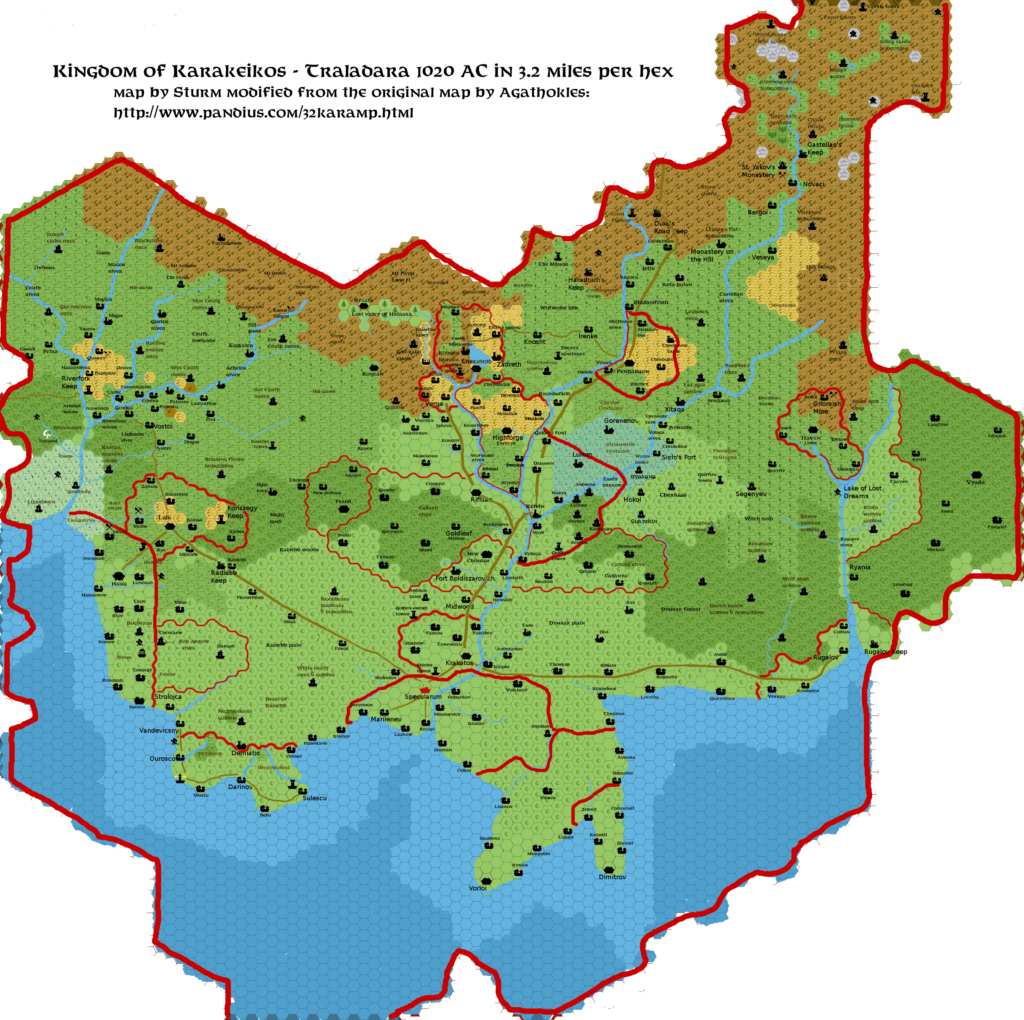
This is an original map created by one of Mystara’s excellent fan cartographers. For more information on the cartographer, including a gallery of all their maps, see also Appendix M: Mappers of Mystara.
Sources
- Expert Rulebook (1981) (PDF at DriveThruRPG)
- Expert Rulebook (1983) (PDF at DriveThruRPG)
- B10 Night’s Dark Terror (1986) (PDF at DriveThruRPG)
- GAZ1 The Grand Duchy of Karameikos (1987) (PDF at DriveThruRPG)
Fan Sources
- Agathokles’ Karameikos, 3.2 miles per hex (2010)
- Karameikos developing thread at The Piazza (2011-2014)
- Sturm’s Karameikos, 3.2 miles per hex v1 (2011)
- Sturm’s Karameikos, 3.2 miles per hex v2 (2012)
References
- All of Francesco’s maps at the Atlas of Mystara
- Francesco’s entry in Appendix M: Mappers of Mystara (upcoming)
- Francesco’s author page at the Vaults of Pandius
Chronological Analysis
This is a fan-made map. It was published in August 2013. The updated Atlas version of this map is not yet available. See also Appendix C for annual chronological snapshots of the area. For the full context of this map in Mystara’s publication history, see the upcoming Let’s Map Mystara 2013. (Please note that it may be some time before the project reaches this point.)
The following lists are from the Let’s Map Mystara project. Additions are new features, introduced in this map. Revisions are changes to previously-introduced features. Hex Art & Fonts track design elements. Finally, Textual Additions are potential features found in the related text. In most cases, the Atlas adopts these textual additions into updated and chronological maps.
Under Construction! Please check back again soon for updates.

